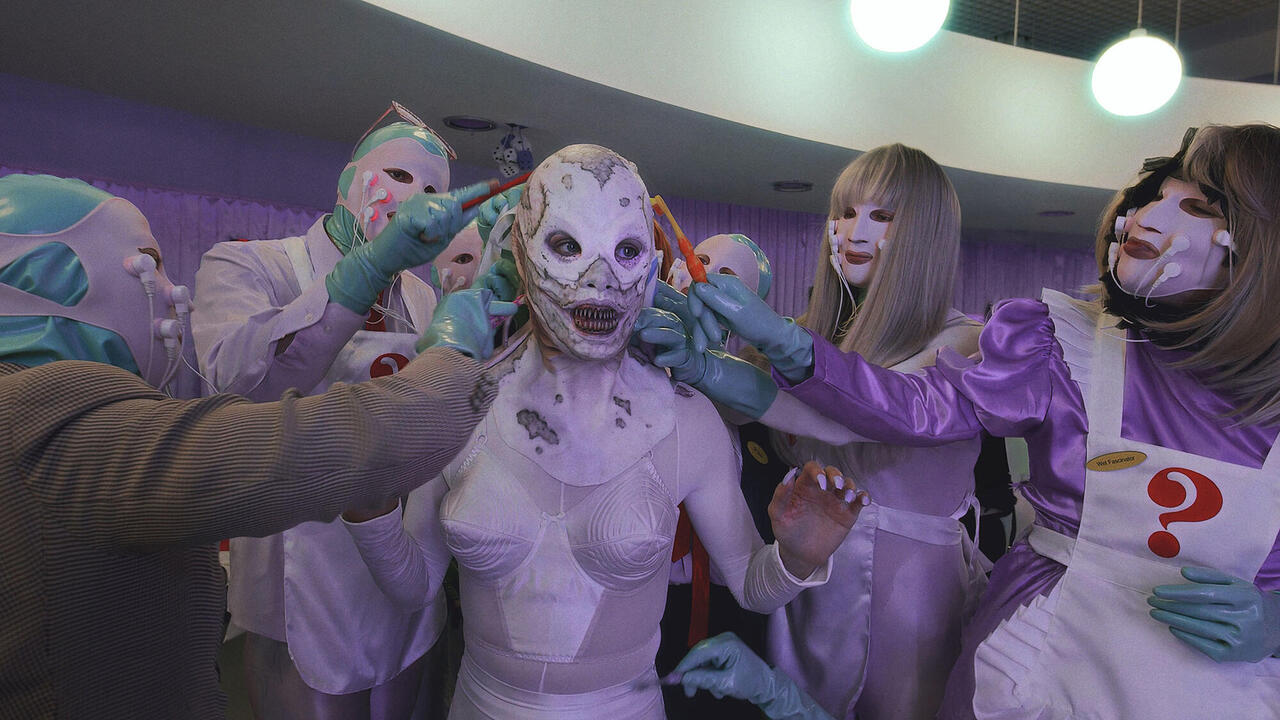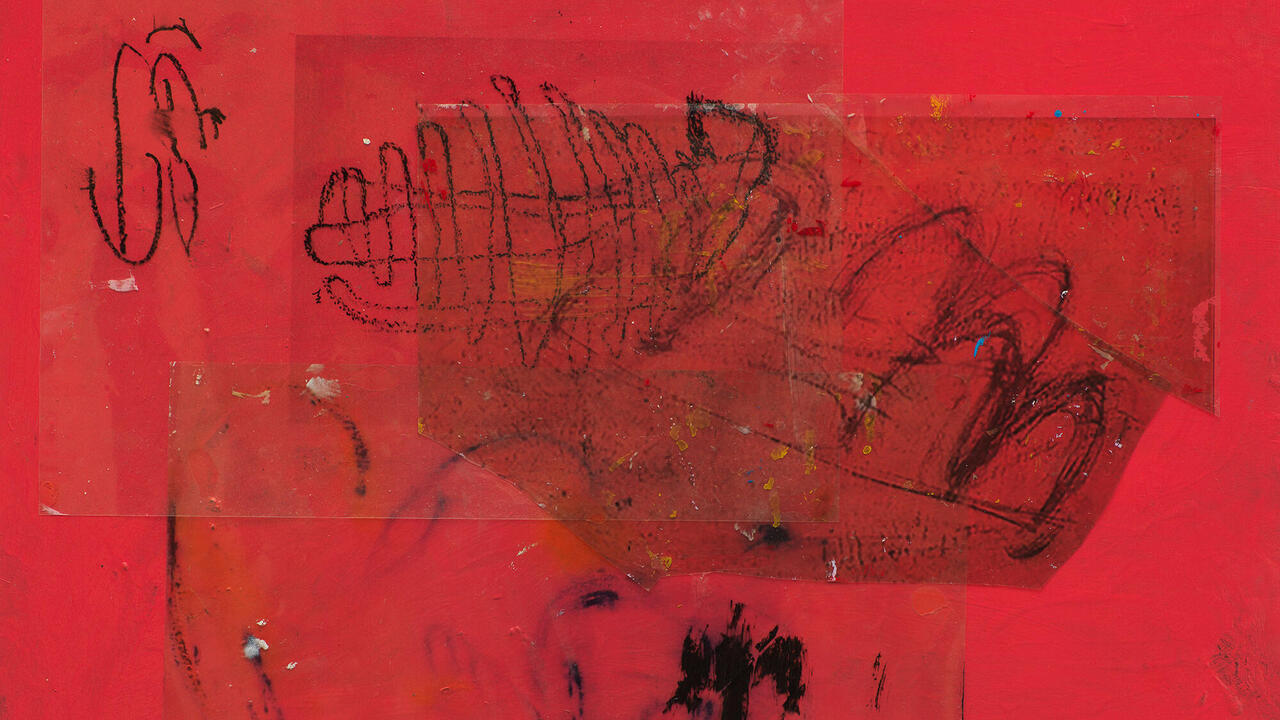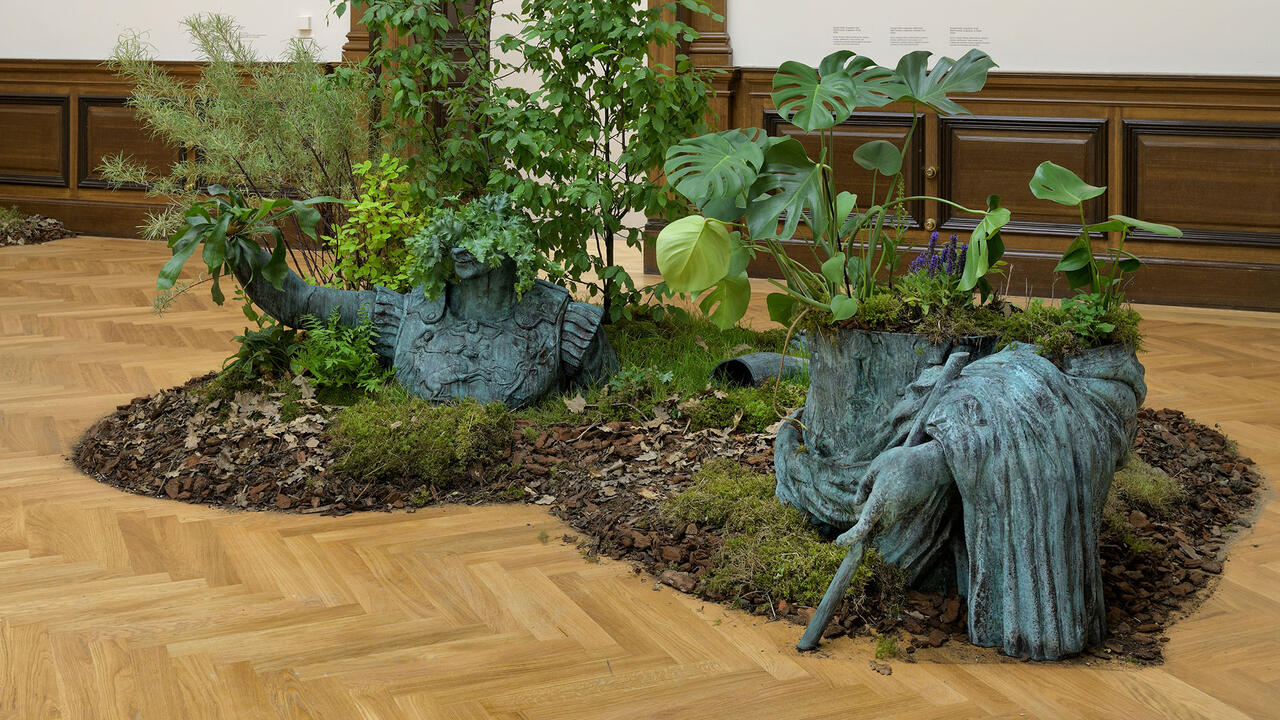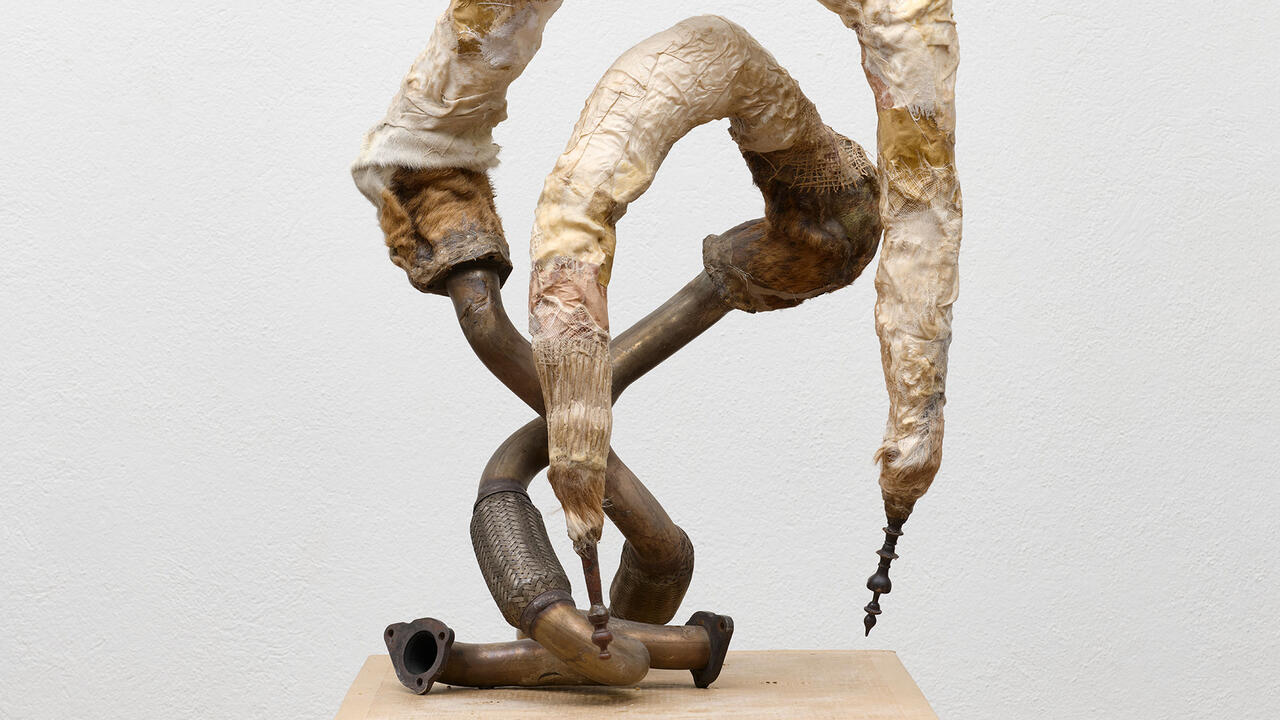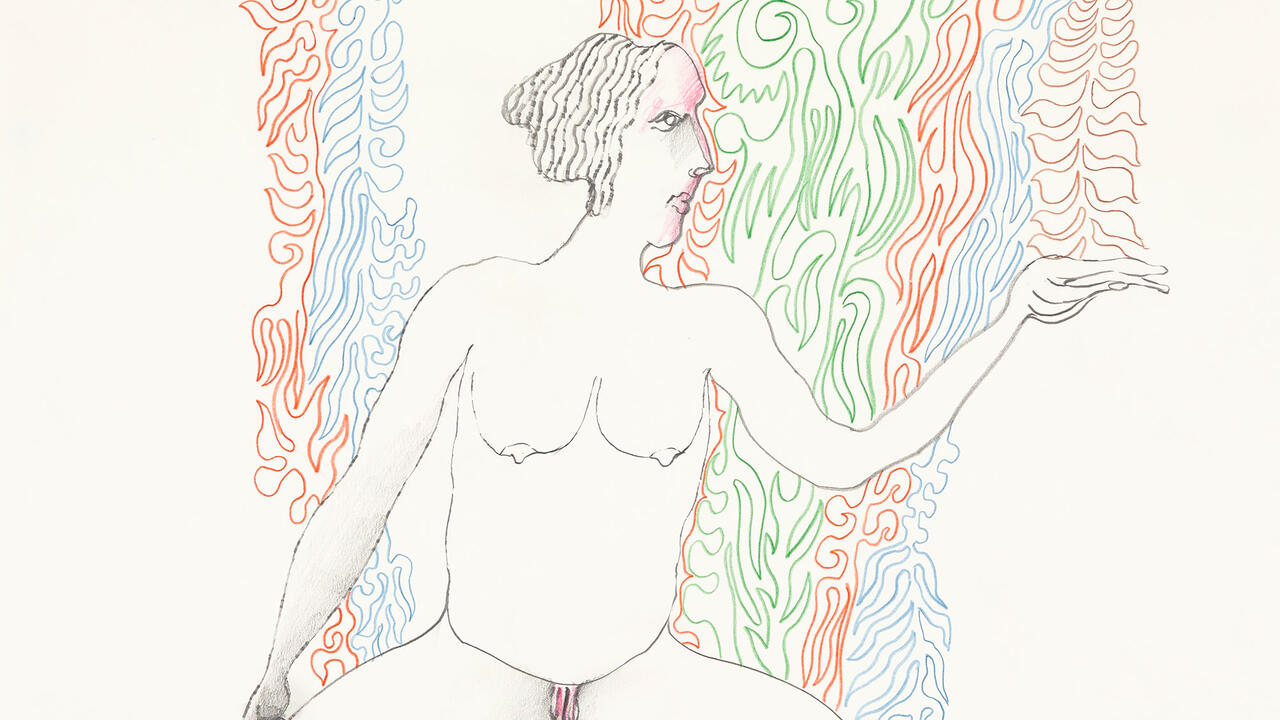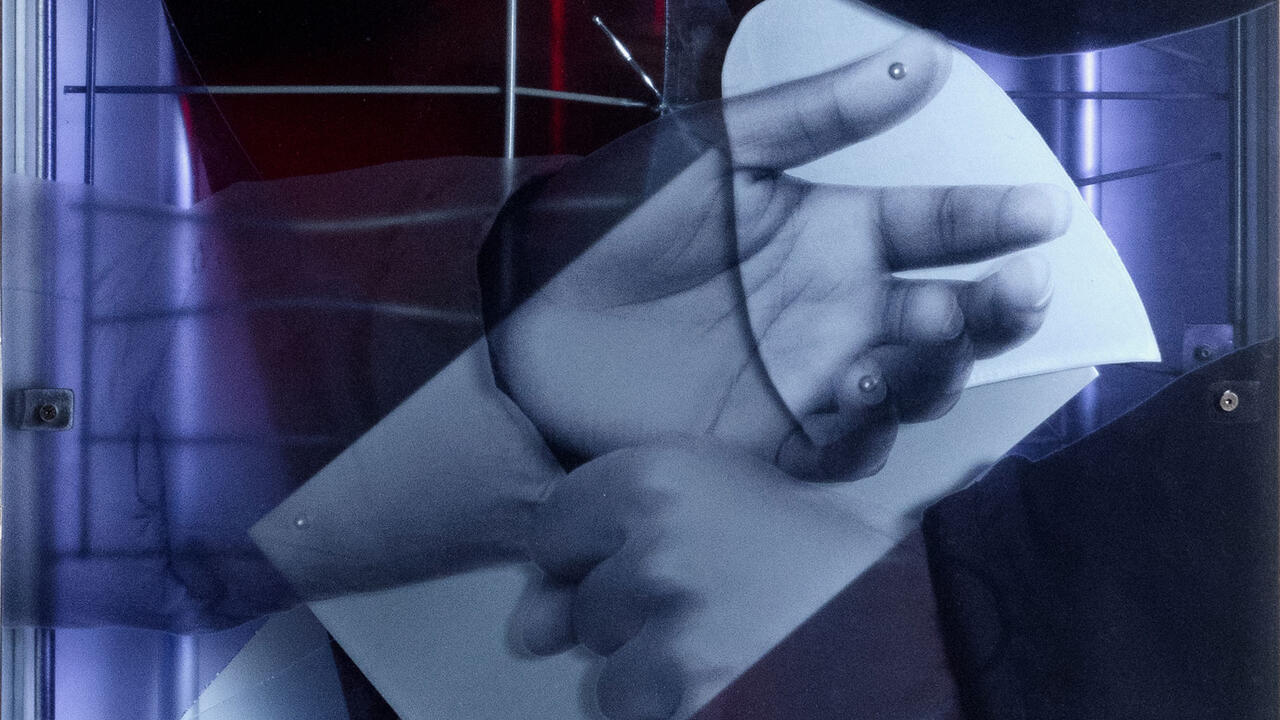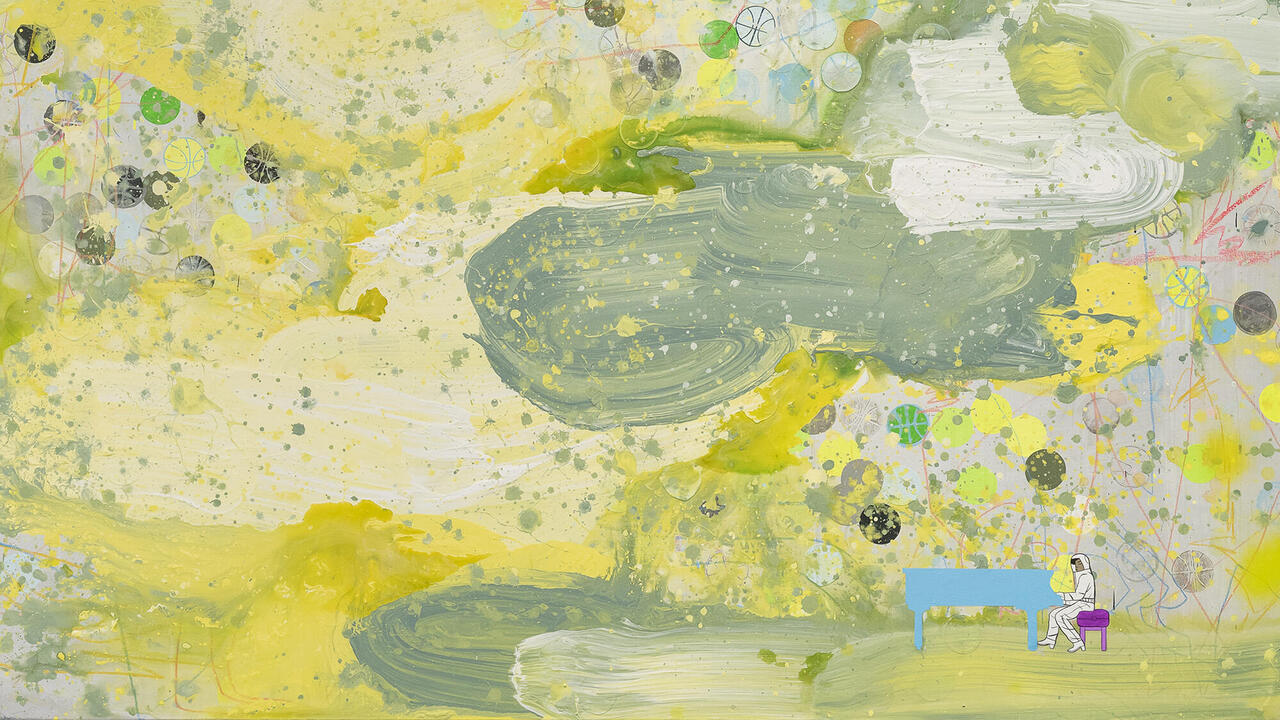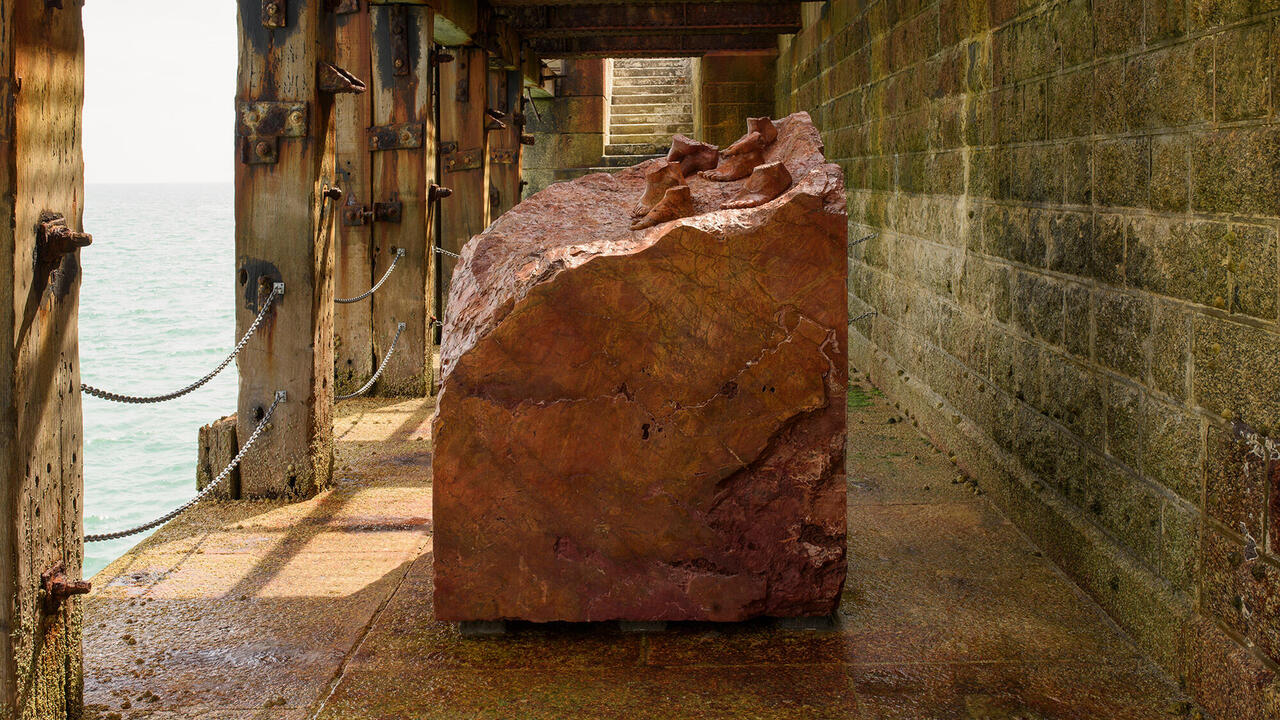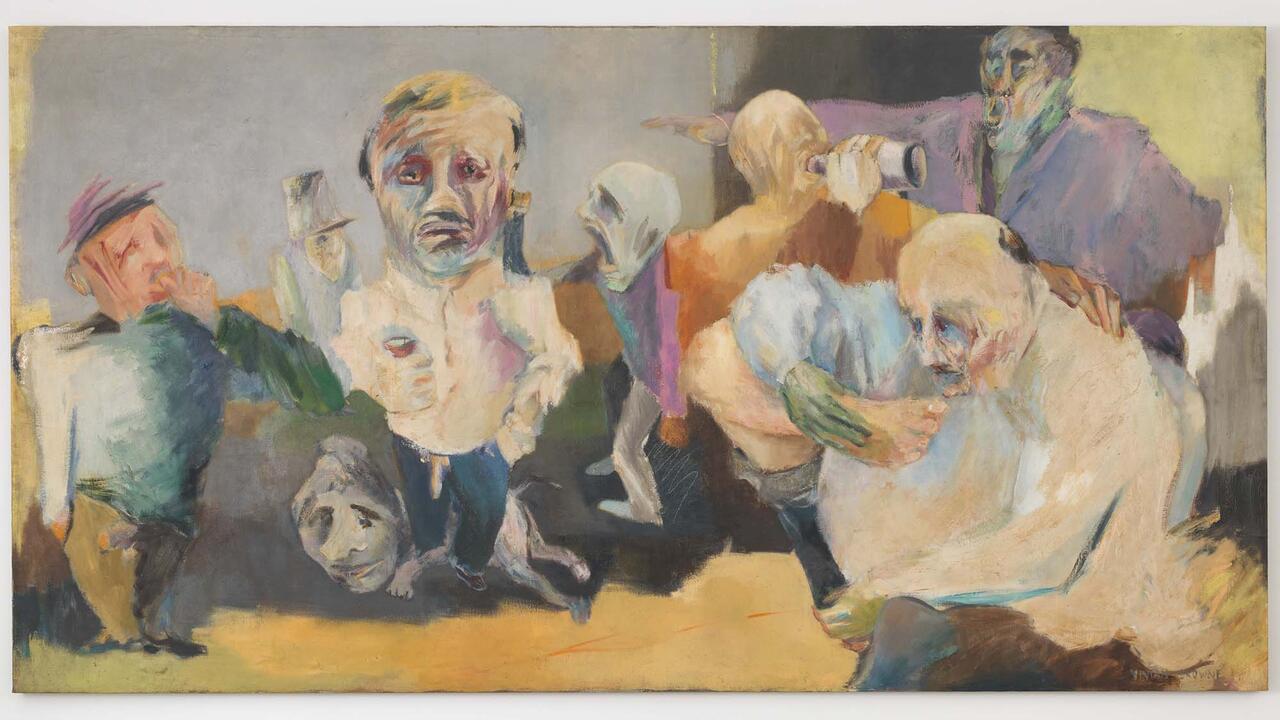‘They Began to Talk’ Reshapes Our Relationship to the Environment
At Kumu Art Museum, Tallinn, an expansive group show offers a distinctly Northern European lens on the climate crisis
At Kumu Art Museum, Tallinn, an expansive group show offers a distinctly Northern European lens on the climate crisis

Against the background of an endless vibration, birds chirp as trains rumble by. Visitors to ‘They Began to Talk’ stand in a small room and listen to John Grzinich’s Geofractions 2024 (2010–24), a sound work about oil-shale mining. Estonia’s main mineral resource, oil shale, is an ancient sediment which requires an inordinate amount of heat and energy to extract. Just outside the small, enclosed space where Geofractions plays is an oil-shale rock. But it’s the bodily reverberations, rather than the visual representation, that hint at the eerie destructiveness of this polluting process.

Showing works by 12 artists and collaborators from Estonia and other Northern European countries, ‘They Began to Talk’ proposes multiple perspectives on humanity’s physical relationship to the environment. The show begins with an object rather than an artwork: a fish trap made of willow shoots from the 1920s, which highlights how people have collaborated with nature in this region for generations. Borrowed from the Estonian National Museum, the trap is displayed in a blank, white alcove resembling an unpopulated diorama.
The exhibition continues in a series of darkened rooms, the design of which creates an enclosed and private atmosphere. In the first room, two life-size projections of Guhte gullá / Here to hear, a 2021 video by Sámi artist Outi Pieski, document her twin daughters performing two dances: one traditional, in which the two young women wear typical Sámi dress and head gear; the other contemporary, which they perform in shorts and transparent fabrics. Pieski’s work envisions new and exploratory ways of being without disregarding her cultural heritage. Elsewhere, Kalaaleq-Danish artist Pia Arke’s spotlit black and white photographs from the series ‘Nature Morte alias Perlustrations I–X’ (1994) explore the colonial history of Greenland, observing how differently non-Indigenous visitors studied the region’s geology to how the Kalaaleq community framed its landscape. Each image – from the spines of books about Greenland’s geography to the post-mastectomy chest of the artist’s friend, whose scar resembles a geologic map – reveals a diverse form of geographical engagement.

Eglė Budvytytė’s video Songs from the Compost: Mutating Bodies, Imploding Stars (2020) expresses yet another kind of relationship to the environment. The footage shows a group of young people moving through a beautiful landscape – a dune where the sea and the forest meet – in an ecoerotic way, proposing a means of being in nature that isn’t extractive but is, instead, intentional and tender.
From here, gallery-goers progress to the fifth floor and the only room awash with natural light, which streams through frosty double-glazed windows that afford an expansive view of the city. On display are Sasha Tishkov’s sculptures: Abandoned Axe, Probably Left There by Some Folkloric Creature (2023), a wooden axe handle wrapped in rope and combined with fence spikes, and Where the Wild Dreams Are (2023), in which chunks of wood are mixed with coffee grounds, sea salt and wax to make a small, animal-like object hanging from the ceiling. The imagined folkloric culture that produced these objects is not disclosed, leaving viewers to invent for themselves this missing part of the narrative.

In the bright light of day, the way Tishkov’s works reference myth and storytelling feels pertinent to this exhibition. As we come to terms with the way humanity is collectively destroying the planet, human experience is increasingly framed by geography. There have been many crucial exhibitions about the climate emergency in recent years, but ‘They Began to Talk’ stands out for offering a distinctly Northern European lens on the environmental crisis. By emphasizing locality, the show tackles indigeneity, colonial histories and extraction, offering multifaceted ways of relating to our environment.
‘They Began to Talk’ is on view at Kumu Art Museum, Tallinn, until 3 August
Main image: Sasha Tishkov, Abandoned Axe, Probably Left There by Some Folkloric Creature, 2023, wooden axe handle, fence spikes, onion dyed sisal and oil paint, dimensions variable. Courtesy: the artist; photograph: Stanislav Stepaško









